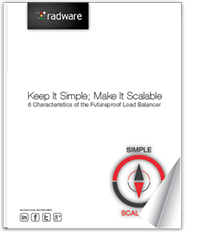5 Key Items for the Digital Transformation of Healthcare
People’s lives are at risk as the healthcare industry transforms patient care with modern IT technologies. Data security and application availability are essential when a patient’s medical information is on the network. Hospitals and medical practices are digitizing healthcare applications like x-rays, CAT scans, medication distribution and surgical procedures using interactive video. In addition, patient care staff are accessing all of this medical information on tablets, phones, and other devices in real-time.

Every second really counts when we are referring to healthcare IT infrastructures. In addition, the security of the data is essential as the most personal and identifying information is within the protected health information (PHI) within an individual’s records. The networks of the healthcare industry have to be the most resilient and protected considering the possible catastrophic outcomes that lead to loss of life.
Digital transformation means IT transformation
There are five items that any IT professional in the healthcare industry should address when designing and managing their digitized medical infrastructure.
- Latency is deadly – If the medical information is not available when the healthcare professional needs it, there is an impact to the patient’s well-being. Applications and their data need to be up 100% of the time or lives are at risk. The quality of the patient care decreases exponentially the longer it takes the medical staff to access the records.
- Operational visibility is critical – Medical facilities must have SLAs defined for application and data access. Different applications will have different SLAs defined for them based on their design and importance towards delivering quality healthcare services. Once the SLAs are defined, the IT organization must have tools to monitor the IT infrastructure’s adherence to the SLAs and tools to identify and implement solutions to fix the problems.
[You might also like: Hospital Stays Can Take Out More Than Your Organs]
- Medical data is bulky – Many of the applications and diagnostic tools used in the healthcare industry are visual and contain large amounts of data within high-resolution images. Medical exam files are large. An average x-ray is 8MB and other imaging systems can produce files over 100MB in size. An average patient exam is approximately 200MB. This means the network infrastructure must support high bandwidth file transfers. These transfers must be done quickly and securely. The application delivery technologies must provide high-performance encryption and application acceleration technologies to make the access to medical records timely.
- Hackers want the data – Endpoint protection as well as perimeter and network security solutions must be used to restrict the access to the PHI only to the professionals that have the proper credentials. IT organizations must implement the latest encryption standards like elliptic curve cryptography (ECC). Malware, specifically ransomware, is rampant. Security means the medical facilities need an outbound SSL inspection solution to protect their assets from malicious sites, email, and exploits.
- Availability rules them all – All of this data is flying through the medical facilities through wires and wirelessly from monitoring machines and diagnostic equipment to storage systems, servers, tablets, phones, and a plethora of other devices. A robust IT architecture can eliminate single points of failure and ensure that anyone, anywhere, can access the information at any time. Technologies like server load balancing (SLB) and global server load balancing (GSLB) create an environment that can guarantee application and data access.
Every second counts when lives are at stake
When the business literally affects peoples’ lives, it is essential to make sure that there is no loss of service. The digital transformation of healthcare means that the network infrastructure must be built to be robust and resilient. Any negative impact to the delivery and security of the medical information can have profound repercussions for patient privacy and ultimately their well-being.




